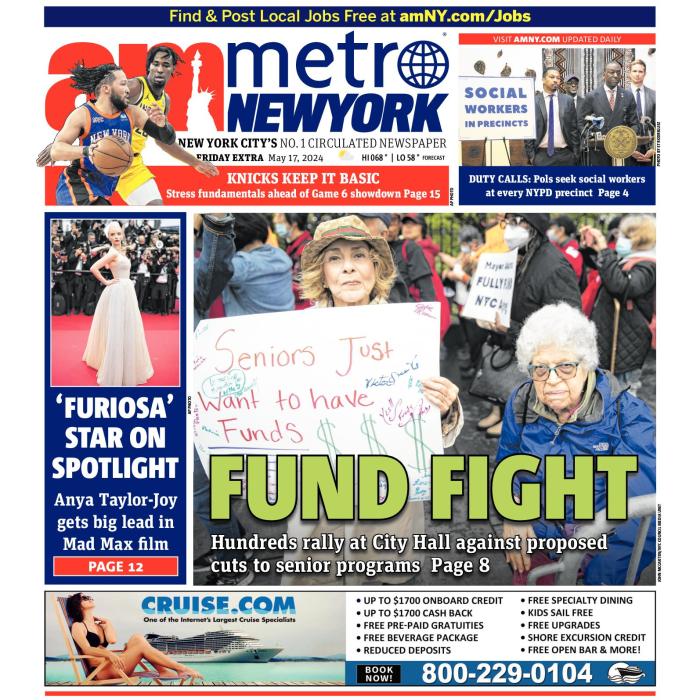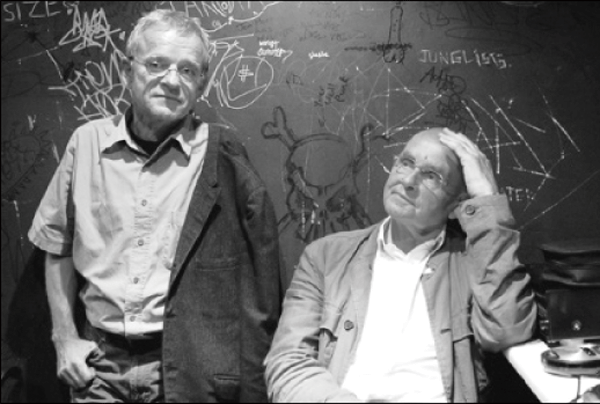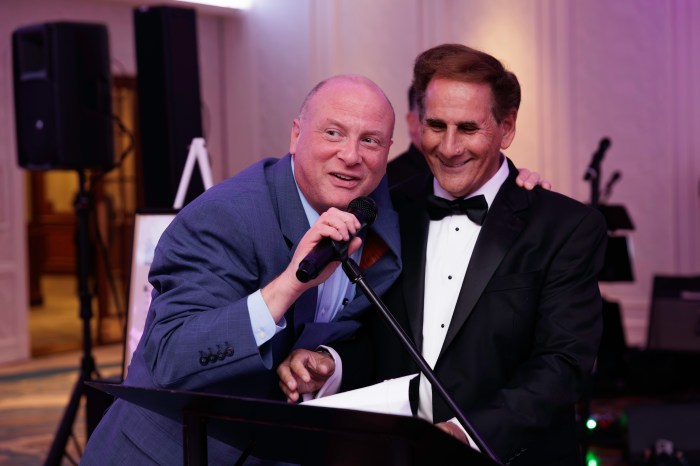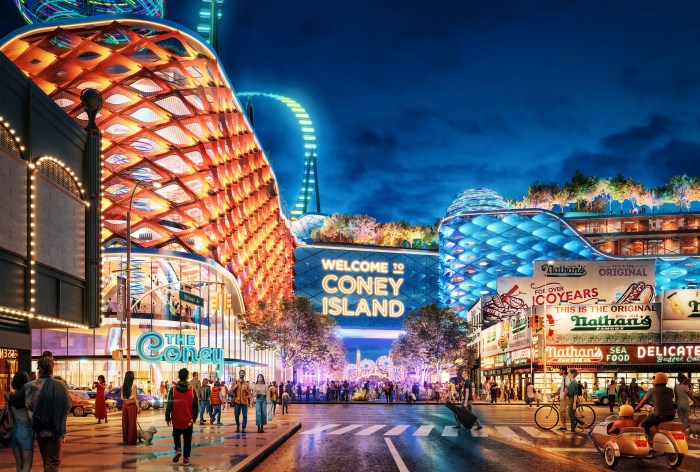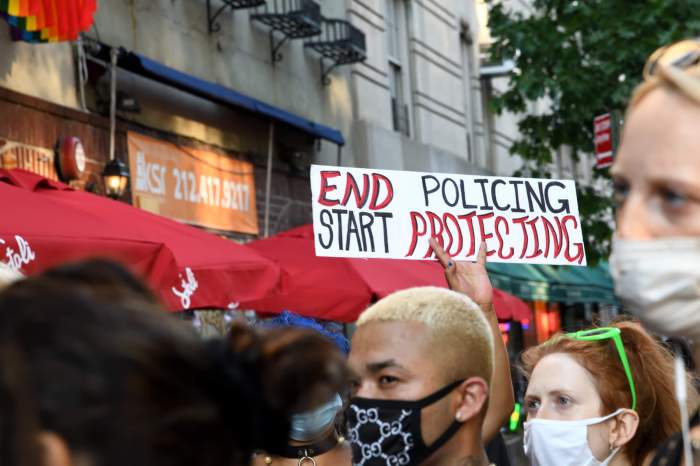By David Todd
No Fun Fest 2008
May 16, 17, 18 at the Knitting Factory
74 Leonard St.
Single-day tickets: $18-20
(212-219-3132; knittingfactory.com,
nofunfest.com)
One of the more impressive things about a good “noise” set is how intrusive traditional musical elements sound when they’re introduced to it. In the worlds of experimental musicians like ASTRO (Hiroshi Hasegawa) and Consumer Electronics (Philip Best), a conventional sense of music is subverted, and a proper melody or chord change can scrape the ear with its own brand of dissonance. The No Fun Fest—beginning Friday at the Knitting Factory—celebrates these musical hackers, who break the codes of the song and replace them with pure sound and sculpture. A branch of the avant-garde or the underground, noise artists reduce music to its essence, the visceral effects of an instrument played the way it should be played or the way it shouldn’t.
With acts from Japan, England and Germany, the festival’s lineup—which includes 50 performers or groups spread out over two stages and three nights (plus DJs)—reflects the wideness of the genre. “There isn’t such a thing as two or three bands that represent the entire Fest,” says Carlos Giffoni, No Fun’s organizer, as well as a Brooklyn-based musician with his own body of electronic work. “The criteria is simply stuff that catches my interest, that I think is unique sonically.”
This year’s edition—the fifth in as many years—includes appearances by avant-founder Tony Conrad, old-school U.S. noisemakers The Haters, and Brooklyn psychedelicians Religious Knives. Of special note are electronic legends Cluster, whom Giffoni describes as “the biggest surprise from an overall point of view.” Central figures in the German rock scene of the 1970s, Cluster helped create the blueprint for ambient music via collaborations with producer Brian Eno and guitarist Michael Rother. “But I am truly excited about every single act,” says Giffoni. “This is the best group of noise/experimental/electronic/free musicians you can find in a single venue.”
Given the diversity of these performers, “noise” as a label has its limitations. For Giffoni, it’s “fine as an all-inclusive term, but it also falls short of the mark.” But what the term does offer is a pretense for bringing together a variety of experimenters, drawing them out of their sonic corners and into something more communal. “I think there is not a noise circuit per say internationally,” Giffoni says. “But there is a large community supporting experimental music and sound art. In the U.S. there is a large DIY network for ‘noise’ and there are smaller ones spread all around the world. That’s a big part of the Fest.”
One prominent part of the U.S. network—returning for his fifth No Fun appearance—is C Spencer Yeh, a Cincinnati-based violinist who’ll be performing with his primary vehicle Burning Star Core (joined for this show by regular collaborators Robert Beatty, Sara O’Keefe, Mike Shiflet, and Trevor Tremaine). Yeh has charted his own evolving sound over fifteen years of cassette, CD-R, and LP releases, working with elements of free noise, drone, electronica, and various forms of percussion. Though violin is Yeh’s first instrument, he’s equally adept at using his voice—rather impressively—to guttural effect, accessing tones widened by a bi-lingual palette as he growls into a pair of mics, accompanied only by what sounds like the click of a film projector. “Ideally speaking, an improviser should be able to take whatever they’re given and create something that’s compelling,” Yeh says, via a phone interview. “Without resorting to ponderous techniques.”
For artists like Yeh, the abstractness of the noise genre doesn’t prevent the development of traditional musical personae, no matter how non-representational or non-“content”-driven the work itself appears to be. Reflecting on Burning Star Core’s newest album, “Challenger”—just released via Hospital Productions and Plastic Records—Yeh observes that it’s “the first one that’s being presented almost overtly like, for lack of a better term, the same way a singer-songwriter album would be presented…except instead of [content] being buried within words or melody, [it’s embedded] within other things such as the specific texture of the sound.”
Talking to Yeh, one gets the impression that he thinks a lot about his role as a contemporary musician, and for good reason; though noise music is often improvised, and perhaps is intuitive by design, it also invites a degree of theory as the artists position themselves within various rock and avant-garde music histories. As Yeh explains: My friend Dominick [Fernow, aka Prurient] has a better-articulated stance about the term ‘noise’. He considers it to be a realm where there’s no boundaries. Everything is up for being used in whatever personal language you want to create, and that includes listening to things horizontally, or vertically, approaching sounds not just because they’re pleasant but because maybe you want to give off an intended effect. It includes listening to sound for content and for gestural reasons versus listening to sound for purely sensual reasons. It’s wide open.
Noise’s profile may have risen recent years, with bands such as Wolf Eyes and Black Dice bringing it wider exposure, but its roots in modern classical music and free jazz run deep. “In the past there have been many artists and projects that have been exclusively focused in noise/experimental sound,” says Giffoni. “From Luigi Russolo, [John] Cage, Stockhausen, to later Coltrane, to groups like Neu!, to Whitehouse, Merzbow, the ball has been rolling for many years.” Wisely, Giffoni builds this sense of history into the No Fun concept, balanced with a feel for the immediate present, and the future.
“I remember when [Carlos] was first conceptualizing this festival,” Yeh says, “drawing on a lot of connections, paying reference to the history as well as giving people who are a lot younger this situation to play in. That’s kind of like a rare thing.
